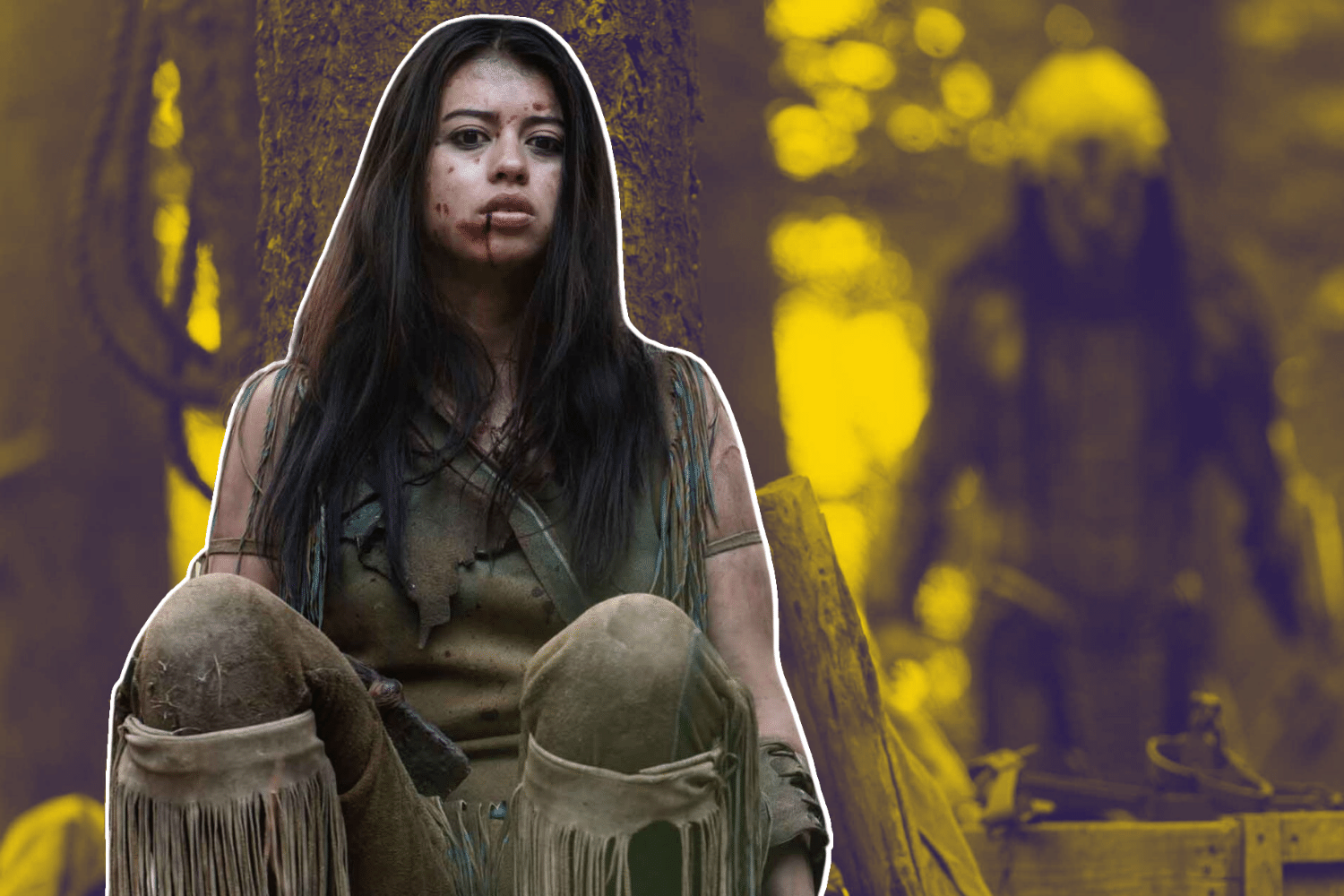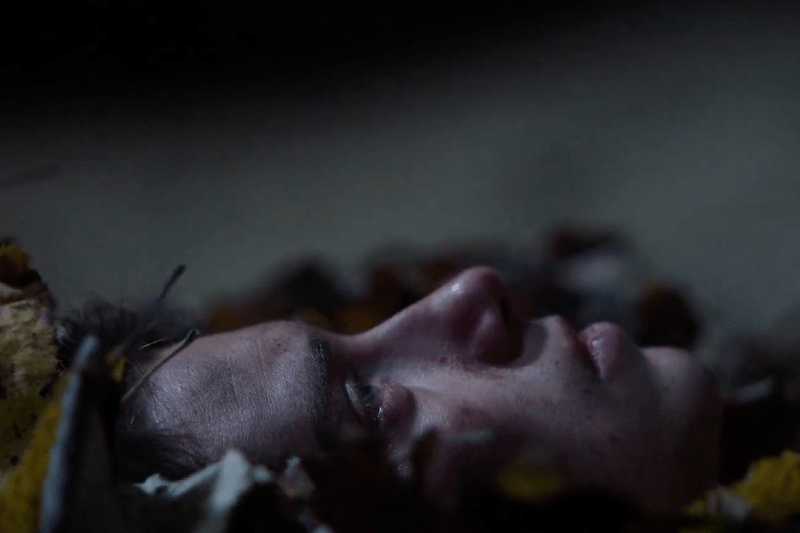Editorials
‘Prey’ Is a Cinematic Rite of Passage Like No Other
Uterus Horror is a subgenre of films that focuses on the experience of growing up with a female gender expression. These films capture the act of becoming an adult and coming into your sexuality, using horror to emphasize and/or act as a metaphor for those experiences. Columnist Molly Henery, who named and defined the subgenre, tackles a new film each month and analyzes how it fits into this bloody new corner of horror.
August 31st, 2022 | By Molly Henery

Looking back at the Uterus Horror films covered in this column so far, there is a common theme. They’re all coming-of-age tales, either related to puberty or first love, showing young women going through a rite of passage that leads them to discovering themselves and their power.
This month’s film? It’s a little different.
Instead of having a young woman go through something connected to a strictly feminine experience, this recent hunter-thriller portrays a young woman breaking tradition to go through a rite of passage typically reserved for young men. If you haven’t guessed it yet, I’m talking about the 2022 hit film, Prey.
Written by Patrick Aison (Wayward Pines, Treadstone) and directed by Dan Trachtenberg (10 Cloverfield Lane, The Boys), Hulu’s original film acts as a prequel in the Predator franchise. Prey tells the story of a young Comanche woman named Naru (Amber Midthunder) living in the early 1700s. While it is normal for the women of her nation to cook, clean hides, forage, and practice medicine, Naru longs to be a warrior. To do this, she must perform what is called kühtaamia. This is a rite of passage in which a young warrior must hunt something that can hunt them back. Her brother, Taabe (Dakota Beavers), is already a respected warrior and seems to wish for his sister to achieve her goal, yet he sees her unique methods as weakness and as a sign she isn’t cut out for the warrior lifestyle.
At the same time, a Predator (Dane DiLiegro) is brought to Earth for his own rite of passage. As we’ve seen in previous films in the franchise, Predators new to the pack must hunt and kill another apex predator. Naru is the first to notice the signs of this new threat. She becomes determined to track down and kill it before it can destroy her home, even though the other warriors don’t believe there is any danger beyond the usual mountain lions and bears. So, while the rest of the women go off to do their daily tasks, Naru sneaks off with her trusty canine companion, Sarii, to track the Predator.
While this Predator is slightly less technologically advanced than the ones we’re used to, it is still a strong, skilled hunter. It has almost no trouble killing a wolf, a bear, and several able-bodied Comanche warriors. When Naru finally comes face-to-face with the creature, it doesn’t kill her. In this situation, Naru is injured and caught in a French fur trader’s trap. Fans of the franchise know the Predator tends to leave the unarmed and injured to live, but an argument could be made that, beyond wounds, the creature could sense Naru was not challenging prey. Whether this is due to her injury or her gender is uncertain, but just like the Comanche warriors, the Predator doesn’t see Naru as a true threat and therefore not a worthy kill. It all leads to a final showdown between Naru and the Predator where she is physically outmatched, but her strength lies elsewhere.
Women are often underestimated. We are seen as incapable of fighting and being warriors simply because of our gender. Everyone in Naru’s life underestimates her: the other warriors, the Predator, and even her own family. It’s not because she doesn’t have the ability to fight. Instead, it’s because she doesn’t fight in the same way as the men around her. While those men focus more on brute strength, Naru is far more observant and strategic.
It was Naru who first noticed the signs of the new threat to her people. She came up with the idea to attach a rope to her hatchet to more efficiently hunt and fight. She was the one who noticed the Predator’s metal arrows follow his red target lasers. Most importantly, Naru was the one who noticed the medicinal orange flowers used to slow blood loss and cool the body enough to become invisible to the Predator’s heat-based vision.
Not only does Naru use her own unique methods to hunt and fight, but she must work ten times as hard as her male counterparts in order to prove herself as a warrior. While other warriors in her tribe likely killed wolves and mountain lions, or perhaps even a bear, Naru had to go above and beyond. Who knows if she would even have been accepted as a warrior if she had killed one of those earthly animals? Yet by taking her time, paying attention to every detail, and coming up with a plan to fight the Predator, Naru proves herself to be the true apex predator because she was able to defeat the thing no man could.
The single most satisfying moment of Prey is when Naru returns home and presents the Predator’s head to her chief. Not only do her people finally accept her as a true Comanche warrior, but she is given the honor of being War Chief. Naru has proven herself more than any warrior before her, and the other young girls of her tribe watching this moment are sure to be inspired. While it shouldn’t have taken killing a 6’9’’ humanoid alien hunter to prove herself as a warrior, that moment likely irrevocably altered the history of her people.
Prey is a pivotal Uterus Horror film for a variety of reasons. Not only does it show a woman going through a coming-of-age practice normally reserved for men, but it also gives audiences a glimpse into a unique cultural practice they might not have been aware of before. This film is also a brilliant depiction of how much harder women have to work to prove themselves in a male-dominated field. Naru knows she doesn’t have the physical strength to defeat the Predator, so she employs more elaborate and strategic methods. Naru teaches women that we all have our individual strengths, we just have to look deep inside to figure out what those strengths are. Once we find our strengths, whatever they may be, we can become a force to be reckoned with.



